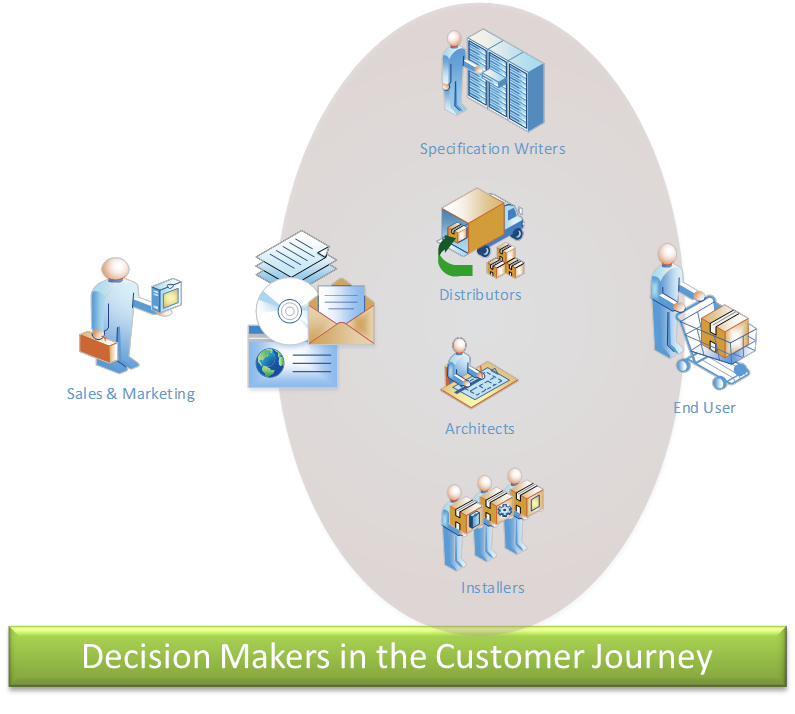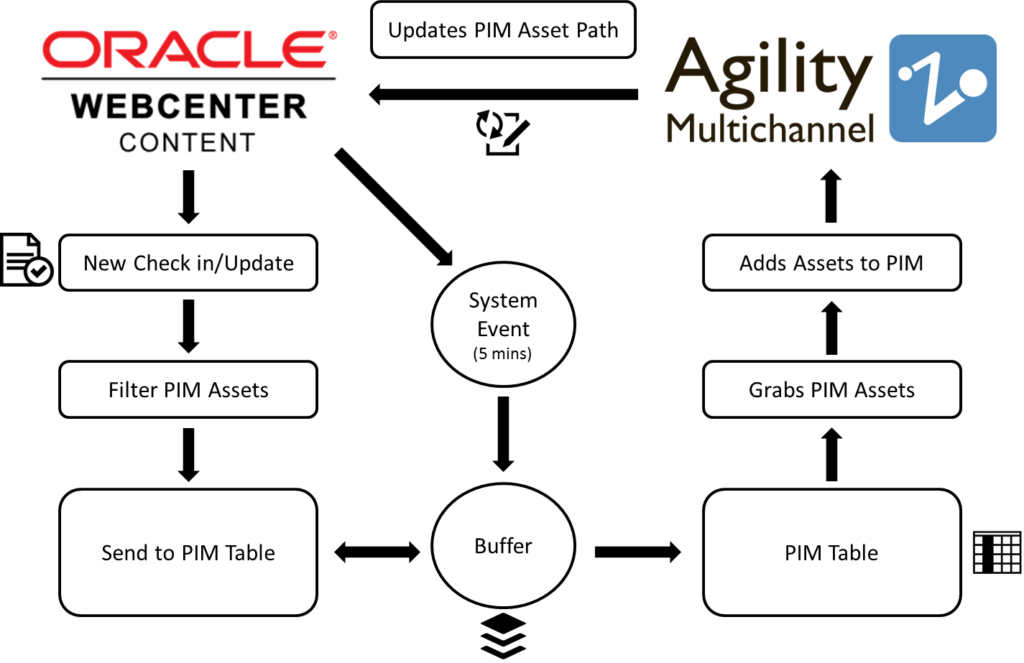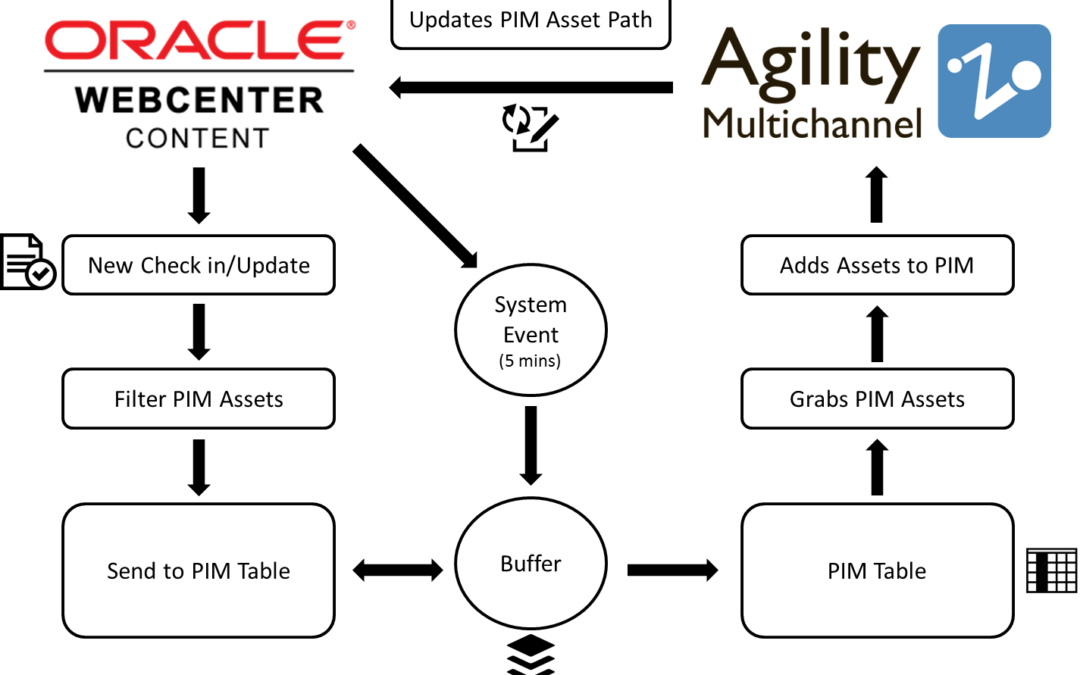Google Search Appliance (GSA) Replacement, Alternatives, and Migration
The Business Problem: Disparate Content Storage
The company was storing some of its assets within Oracle Universal Content Management (UCM). Others, however, were stored in employee laptops, file servers, and various other locations. The assets were also stored with multiple naming conventions. These factors made it difficult to find relevant assets for products and repurpose them across channels and teams, as well as collaborate on the assets internally or with partners. Employees involved in asset creation and management described it as “content chaos”.
Illustration 1: Content Creation Lifecycle
The company’s view on how content will be created and consumed. This includes the various audiences for the content illustrating the content types necessary (electronic and print) – technical specifications, price and availability, manuals, etc.
Selecting Oracle WebCenter Content for Asset Storage and Management
With these issues identified, the company set out to develop a strategy to implement a permissions-based, centralized document and digital asset management system. They had been using Oracle UCM for some time, but their initial implementation was not architected in a way to best suit the needs to search, access, use, and share assets across the company. The company had also recently deployed the Agility product information management (PIM) system. Agility is used to manage the fully lifecycle of the company’s products, including where and how they can be marketed and sold, as well as what they should cost. The company wanted to integrate Agility with Oracle UCM, so that they could relate products in Agility with associated assets in UCM. This would make it easier to support commerce channels, including the company’s website, print catalogs, and the future desire to enable the sales team to access the company’s full product line “binder” from their mobile devices. The company needed the content management system to be able to output multiple rendition types including videos and PDFs. For these reasons, the company decided to upgrade Oracle UCM to WebCenter Content 12c. An added benefit of 12c was that it provided the ability to integrate with third-party audio and video transcoding systems. This enabled the company to leverage FFmpeg software, which records, converts, and streams audio and video data. This video rendition engine is an open source product and therefore free, which helped keep implementation costs down as no additional licenses needed to be purchased. The company partnered with Fishbowl Solutions to perform the upgrade to WebCenter 12c and integrate the product with Agility. Fishbowl had engaged with this company previously to scope out the future use of Oracle UCM (WebCenter), as well as design how its digital asset management component could be architected to achieve the following:- Simplified Image Access and Control
- Provide an easy-to-use system that minimizes non-value add tasks. Users should have simple input mechanisms, assets should be transformed transparently to the user, and end up distributed to the right channel based on product name and metadata values.
- Simple Scalable Solution for More Effective Collateral Control Across All Brands
- Simplified solution architecture that is scalable to the needs of the company’s brands and shared functions and clarifies/enforces the defined “fit for purpose” solutions.
- Image and Referential Content are Appropriately Managed throughout the Lifecycle
- Knowledge workers want a solution that manages data according to organizational policy and standards within the systems they use on a day-to-day basis and does not require significant additional effort.
Oracle WebCenter Content 12c Implementation and Agility Integration
The company created a “Portfolio Initiative Roadmap” identifying these 9 key initiatives required to build out their Enterprise Digital Asset Management Solution and Program:- Establish Foundation
- Marketing and Creative Services Enablement
- Sales Enablement
- Training and Certification Enablement
- Engineering Enablement
- Archive and Access AP Images To/From Oracle WebCenter Content
- Creative Services Enablement
- Ecommerce Enablement
- Evolve Foundation
The Fishbowl team did an outstanding job researching, planning, troubleshooting and creating the migration schedule for the Oracle Universal Content Management to WebCenter Content 12c upgrade. We did encounter one issue the night of the release, but the team developed a resolution and was ready to attempt the upgrade within 3 days. I had the utmost confidence their plan was solid and we would attempt the upgrade mid-week. The next attempt went very smoothly and users were in WebCenter Content the next morning.

Illustration 2: WebCenter Content and Agility Integration Fishbowl designed a filter to capture all of the IDs of content items checked into the PIM Asset profile and added these to the Send To PIM Table. A system event was then added in WebCenter which runs about every 5 minutes, and this checks assets that are in the Send To PIM Table and adds them to the PIM Table. After it is added to the PIM Table, an API call is made to the PIM system to pull the assets from that table and add them to the appropriate product with any relations associated to it (i.e. the high resolution image for a specific product). After it is added into the PIM system, an API call is made to WebCenter with the updated path of the asset.

